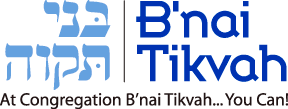Dear Friends,
The High Holy Days are a time of great excitement and inspiration. As the first cool breezes of the autumn approach after the unforgiving heat of summer, so too the thought of atonement refreshes us with the possibility of “at-one-ment.” We are energized by the intensity of our services and the pure joy of coming together as a community. More than at any other time, we feel the profound meaning of the traditional phrase “chazak, chazak, v’nitchazek” “Be strong, be strong, and let us strengthen each other.”
This year, though, is a year like no other we have experienced. Coming together in large numbers will not strengthen us. It would be dangerous, perhaps, G-d forbid, even deadly. The COVID-19 virus has proven to be insidious and persistent, and we must therefore take the necessary precautions. Regarding the commandments, the Torah says “You shall live by them.” And the rabbis were quick to add “Live by them, not die by them.” We must never allow our sincere spiritual devotion to endanger us, or others.
Therefore, after deep deliberation and in accordance with the unanimous opinion of the medical experts we have consulted, we have determined, sadly but conscientiously, that during the holidays we will only allow a small and safe number of people to enter the sanctuary (approximately 15)—enough to ensure that we can have complete services including kaddish, Torah reading, and so forth. You can find the reasoning of our medical experts below.
All services will be live-streamed to the entire membership. We will modify services accordingly. They will be shorter than usual, and supplemented with a rich array of additional web content. We are planning on streaming/zooming virtual Junior Congregation and Torah for Tots, as well.
We will have two shofar services outside on the second day of Rosh Hashana (the first day is Shabbat, when the shofar is not blown). One will be a car rally in the Synagogue parking lot immediately after day-two morning services. The second will take place in the late afternoon during Tashlich at Oakey Park. For everyone’s safety, social distancing and masks will of course be mandatory at these events.
Plans are being finalized to ensure that everyone has prayerbooks, pledge cards (what would the holidays be without pledge cards?), and a bit of sweetness for the new year (we could all use some!). There remain a number of unanswered questions concerning honors and aliyot, determining who will come to which services, and so forth, but now that our High Holy Day committee has finished agonizing over the attendance issue, we will quickly answer these and fill you in on the details.
For those who will be watching the live streaming services you might consider having a small number of friends and family watch it with you in your back yard, following all CDC guidance regarding masks, social distancing, etc. We encourage all who attend virtually to dress specially for the holidays, and consider how you can enhance your spiritual space. For example, use a white tablecloth on the dining room table instead of crowding into a cramped office.
With hopes for a sweet and SAFE new year,
| Robert L. Wolkoff | Bruce Rockman | Marty Abschutz | Gordon Heit |
| Rabbi | Cantor | President | Ritual Chairperson |
Reasons for having minimal number persons:
- Time: the more time spent in a room with an infected individual, the greater the risk. Popping into the synagogue to drop something off–pretty low risk. Spending a couple of hours in the synagogue–higher risk.
- The idea that SARS-COV-2 (COVID-19) can spread through aerosols (tiny particles that can be suspended in air) has gained traction. There are reports of people becoming infected at restaurants seated 20 feet away from the index individual. Air currents carried the virus containing aerosols across the room. So, 6-8 feet may be an important measurement when it comes to droplets (which fall to the ground after expulsion), but it is not a meaningful distance when considering aerosols.
- Singing/talking: increased expression of aerosols.
- Ventilation: the high ceilings should be a plus but only aerodynamic engineers who understand air flow patterns could analyze ventilation in our synagogue. There is some evidence that the air in bathrooms may contain more virus.
- The more people, the more likely someone won’t be wearing a mask properly.
- The more people, the more likely, statistically, that one of them has COVID-19.
- The more people, the harder it is to distance and higher use of the bathroom.
- Numbers are back down now after a couple of weeks of concerning increases. However, the testing shows us what was going on last week, not currently. We won’t know until the week after the HH days what the incidence of new cases was.
- It is accepted now that both asymptomatic and pre-symptomatic individuals can spread the virus.
- And lastly, who attends services? People at higher risk, based on age and underlying health problems. We can do those folks a favor and remove the tempting option of taking a risk.
